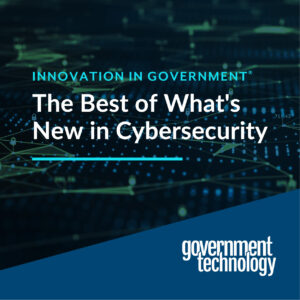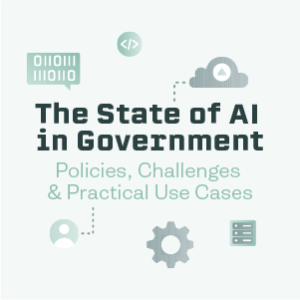The rapid evolution of enterprise technology has made modernization an urgent priority. Businesses today face challenges ranging from complex infrastructure and escalating costs to the rising demands of artificial intelligence (AI) and hybrid cloud environments. Together, Hewlett Packard Enterprise (HPE), Advanced Micro Devices (AMD) and Nutanix provide unified solutions that simplify operations, strengthen security and deliver unmatched performance, empowering organizations to navigate current demands and prepare for the future.
Addressing Market Challenges with Innovation
In a dynamic market where infrastructure complexity and cost pressures are top concerns, the combined expertise of HPE, AMD and Nutanix is driving transformative solutions. Nutanix’s hyperconverged infrastructure (HCI) simplifies multicloud management, enabling organizations to run workloads across on-premises, public and private clouds or colocation sites. With intuitive tools like Prism, Nutanix delivers flexibility, cost efficiency and robust security.
On the hardware side, AMD’s EPYC Central Processing Units (CPUs) have revolutionized the data center market, achieving a 34% market share through scalability (i.e. higher core count options that help reduce server footprint). Designed for diverse workloads, including analytics and hybrid workforce applications, AMD solutions like the 4th Gen EPYC CPUs provide outstanding performance while optimizing total cost of ownership (TCO).
Meanwhile, HPE’s ProLiant DX Gen 11 servers offer fast deployment, tailored configurations and scalable options for diverse business needs. Supported by OpEx models like GreenLake, HPE ensures financial flexibility, making modernization accessible for organizations of all sizes.
Unlocking the Potential of AI

AI is reshaping industries, and the HPE, AMD and Nutanix partnership enables enterprises to meet these infrastructure demands. Nutanix’s HCI platform, paired with AMD’s EPYC CPUs, deliver optimized performance for AI and machine learning (ML) workloads. The Nutanix DX 385 model supports up to four double-wide Graphics Processing Units (GPUs), providing accelerated compute for AI-driven environments. With features like network microsegmentation and automated lifecycle management, Nutanix ensures secure, optimized environments for AI applications.
AMD’s EPYC processors are tailored for AI applications, from small-scale enterprise large language models (LLMs) to large-scale generative AI. High core density and features like Secure Encrypted Virtualization (SEV) ensure robust performance and security. HPE complements this with ProLiant DX servers designed for AI workloads, including their “GPU in a Box” model, which simplifies deployment and scales with demand, making it easier for businesses to meet the demands of AI-driven applications. Together, these technologies provide enterprises with the computational power and flexibility to unlock AI’s potential within hybrid cloud environments.
Simplifying Modernization Across Infrastructure
Modernization is no longer optional—it is a necessity for businesses navigating an evolving IT landscape. Businesses face the dual challenge of balancing legacy infrastructure needs with the demands of the future. HPE, AMD and Nutanix simplify this transition by addressing performance, security, management and integration, ensuring organizations modernize effectively while maintaining operational continuity.
Performance
Nutanix software on AMD EPYC-powered HPE ProLiant DX servers handles workloads like virtualization, analytics, big data and AI/ML with exceptional performance. The 4th Gen EPYC CPUs deliver high performance across metrics including per core and per server, reducing infrastructure costs. High-frequency CPU options enable the provisioning of more virtual machines and workloads without increasing physical cores, ensuring businesses can scale seamlessly as demands evolve. HPE delivers two high-performance NVMe storage options, designed to boost data center performance while ensuring reliability and security. HPE NVMe Mixed Use (MU) SSDs use Peripheral Component Interconnect Express (PCIe) Gen4 to boost performance for Big Data, high-performance computing (HPC) and virtualization with fast transfers and low latency. HPE NVMe Read Intensive (RI) SSDs optimize read-heavy workloads like web servers, storage and caching with high-speed PCIe Gen3 and Gen4.
Security
Nutanix integrates features like automatic auditing, encryption and network microsegmentation to ensure compliance and safeguard IT environments. AMD EPYC processors add another layer of protection with SEV, isolating virtual machines with memory encryption for silicon-level protection. HPE’s Silicon Root of Trust protects firmware from the boot process and continuously monitors the Basic Input/Output System (BIOS), ensuring server integrity and preventing breaches.
Management
Managing modern IT environments is simplified with Nutanix’s one-click updates and lifecycle management capabilities, which integrate seamlessly with HPE’s Service Pack for ProLiant. Nutanix Prism offers a unified management plane, enabling centralized control for clusters, applications and data. The intuitive management interface reduces complexity, empowering IT teams to handle hybrid cloud environments with ease and efficiency.
Integration
Pre-installed with Nutanix Acropolis OS (AOS), HPE ProLiant DX servers offer out-of-the-box solutions optimized for AMD EPYC processors. These systems support diverse hypervisors, including Nutanix Acropolis Hypervisor (AHV) and third-party options, giving businesses the flexibility to tailor infrastructure setups to specific needs. This collaboration ensures workload-specific performance and seamless integration across various deployment environments, helping businesses modernize without disruption.
HPE, AMD and Nutanix demonstrate the power of collaboration by offering a unified approach to modernization. By combining high performance, robust security, streamlined management and flexible integration, their solutions provide businesses with the tools they need to meet today’s challenges and prepare for tomorrow’s demands. Collectively, they simplify the journey to modernization, proving that they truly are better together.
Discover how HPE, AMD and Nutanix are better together in delivering powerful, secure and scalable solutions for modern enterprises. Watch our webinar, “Modernize Your Infrastructure with HPE & Nutanix – Powered by AMD,” to explore cutting-edge innovations and actionable strategies that transform IT environments.
Carahsoft Technology Corp. is The Trusted Government IT Solutions Provider, supporting Public Sector organizations across Federal, State and Local Government agencies and Education and Healthcare markets. As the Master Government Aggregator for our vendor partners, including HPE, AMD and Nutanix, we deliver solutions for Geospatial, Cybersecurity, MultiCloud, DevSecOps, Artificial Intelligence, Customer Experience and Engagement, Open Source and more. Working with resellers, systems integrators and consultants, our sales and marketing teams provide industry leading IT products, services and training through hundreds of contract vehicles. Explore the Carahsoft Blog to learn more about the latest trends in Government technology markets and solutions, as well as Carahsoft’s ecosystem of partner thought-leaders.



 “Threat actors are constantly devising new attacks and methodologies, so organizations must stay on top of trends and constantly evolve how they build and secure their software supply chain. It isn’t a ‘set it once and you’re good’ kind of thing. President Biden’s executive order on improving the nation’s cybersecurity and some bills going through Congress will help address some of the issues. Among many things, the executive order mandates service providers disclose security incidents or attacks. It’s also important to establish a community where security professionals across the nation can exchange security and threat information. You don’t want to solve these things in a vacuum. We’re stronger as a community than as individual organizations.”
“Threat actors are constantly devising new attacks and methodologies, so organizations must stay on top of trends and constantly evolve how they build and secure their software supply chain. It isn’t a ‘set it once and you’re good’ kind of thing. President Biden’s executive order on improving the nation’s cybersecurity and some bills going through Congress will help address some of the issues. Among many things, the executive order mandates service providers disclose security incidents or attacks. It’s also important to establish a community where security professionals across the nation can exchange security and threat information. You don’t want to solve these things in a vacuum. We’re stronger as a community than as individual organizations.” “Traditionally, for good reasons, the conversation in K-12 has been focused on education. The priority for spending has been steered toward academics — getting more support and training for teachers and trying to control the classroom size, for example. Technology, and especially cybersecurity, was a scheduled expense, up there with predictable plumbing problems and textbook replacement, but contained within the IT organization. However, IT — and especially cybersecurity — has now become a strategic element for education. Parents, superintendents, board members and executives within administration have realized that keeping data and systems safe can have a district-wide impact. Experience a data breach or a ransomware event and you’ll suffer damages that strike your budget as well as your reputation: Families will leave your schools to go to the district next door that didn’t have a break-in. That means it has become something that should be part of all decision-making.”
“Traditionally, for good reasons, the conversation in K-12 has been focused on education. The priority for spending has been steered toward academics — getting more support and training for teachers and trying to control the classroom size, for example. Technology, and especially cybersecurity, was a scheduled expense, up there with predictable plumbing problems and textbook replacement, but contained within the IT organization. However, IT — and especially cybersecurity — has now become a strategic element for education. Parents, superintendents, board members and executives within administration have realized that keeping data and systems safe can have a district-wide impact. Experience a data breach or a ransomware event and you’ll suffer damages that strike your budget as well as your reputation: Families will leave your schools to go to the district next door that didn’t have a break-in. That means it has become something that should be part of all decision-making.” How to Move DevOps from Disarray to Unity
How to Move DevOps from Disarray to Unity 3 Ways Cloud Improves AI
3 Ways Cloud Improves AI